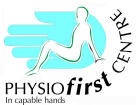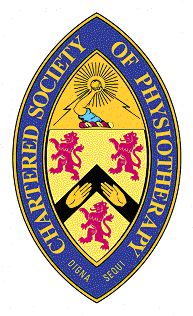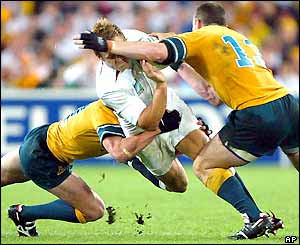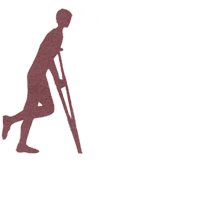


Specialist Areas
Links
|
Investing in occupational health services can significantly improve productivity, reduce sickness rates and boost employee morale. Health and Safety Executive figures show that sickness absence costs British society up to £30 billion a year and a third of the 40.2 million days lost each year are due to musculoskeletal conditions. Occupational health physiotherapy and rehabilitation not only allow for a quick return to work and therefore economic benefits of increased productivity, they can also provide fast access to treatment, increase confidence about work abilities and improve the general well being of people who have had work related injury. More and more companies are recognising the need to have an established occupational health department with prompt access to physiotherapy. Early treatment for musculoskeletal problems can mean that an employee who would normally have to go off sick with his/her problem, can be kept in the work place. In addition to this many employees that have had to have time off due to an injury are often able to return to work earlier following physiotherapy intervention. This can result in a saving of many man hours for a business, which means that investment in a physiotherapy service can often pay for itself several times over, representing sound financial economics to the company. Companies can be seen to be proactive in helping the employee to recover in the quickest possible time from their injuries. They are able to do this by providing prompt access to physiotherapy which can often take several weeks or even months to arrange via a GP on the NHS. This leads to a ’sense of worth’ to the worker and portrays the image of a caring employer who values it’s employees. Occupational health clinics can be run both on and off site. There are advantages and disadvantages to both. On site clinics are convenient to the workers in that it cuts down travelling time to attend for treatment, reducing absence from work. It is also easier for the physiotherapist to communicate with other occupational health staff regarding advice and/or restrictions that might be necessary for a particular patient in the work place. Disadvantages include lack of flexibility on appointments since the clinics can only be provided on certain days and at certain times. Set up costs - there needs to be a dedicated room and treatment plinth to allow the physiotherapy treatment to be given on site. Restriction on equipment. The physiotherapist will have to bring all the equipment he intends to use. Since not all equipment is portable, this will restrict treatment options.
Off site clinics offer more convenient, flexible appointment times. There is also a wider choice of equipment available. There are no set up charges, as providing a treatment room within the company is not necessary. Disadvantages include travel time to and from the clinic and more difficult communication and feedback to occupational health staff regarding the patient status and work rehabilitation. This practice runs both on and off site clinics successfully.
Sports Injuries
More and more people are participating in sport and recreational activities than ever before. The general public is slowly recognising the need for them to keep their bodies in as good a condition as possible. We are constantly being reminded to eat healthy food and take up exercise. Unfortunately, any form of physical exercise carries a certain risk of injury. This is especially so in individuals who are not used to or prepared for the activity that they are performing and those who are very competitive and push themselves beyond their limits. Accidents will happen and sometimes a player can be just simply unlucky, but in a lot of cases injuries can be prevented. Lack of preparation, such as adequate warm up and stretching techniques, can lead to an increase risk of injury, as can participation in contact sports, where direct blows from other team mates or the opposition can result in trauma and injury. Athletes pushing themselves too hard beyond their capabilities and not allowing adequate recovery time are also a prime sources of sporting injury. These are the risks that a lot of us are prepared to take and as a consequence a considerable proportion of our patients have sports related problems that need treating. As well as receiving treatment for your particular problem to achieve the quickest recovery possible, we will also give advice on minimising the risk of a further recurrence of the injury. We are also in a position to give advice on strapping techniques and orthopaedic supports that may benefit you and help to protect a vulnerable area. During your recovery phase we will give clear advice on what you can and can’t do in relation to your sport/pastime so that you do not compromise the repair process, but at the same time maintain some general fitness levels where possible. We will also give you a guide on your progress and when you can next expect to be fit enough to resume full activity and competitive sport. Coaches are welcome to come along with injured team members to their clinic appointment if they wish to seek more detailed advice on what they should be allowing the individual to do during training or competitive events. Parents are encouraged to attend with patients aged under 16 so that they have a clear idea of what instructions their children have been given by our physiotherapists. It is easy for youngsters to ‘alter slightly’ what they have been told in order to pursue their beloved sport. Equally, it is important to relay the need for rest, if this is what is required, to a potentially over enthusiastic parent or coach who has their star performer stood on the side line recovering from an injury and clearly wishes them to carry on because of the pressure of being involved in a potentially successful team. If you have paid for professional advice and treatment, it is wise to take on board the advice that is given to you. We fully appreciate the high level of enthusiasm that the majority of our injured athletes have, but in order for us to get you back to 100% fitness, we need your full co-operation. Without this progress will be limited and you may only have yourself to blame!
Spinal conditions
Spinal pain probably makes up about 50% of the overall conditions that we treat at the clinic. You would do exceptionally well to live a lifetime without suffering neck or back pain at some stage! The mechanical nature of our jobs and pastimes, adverse stresses and strains due to bad postural habits and poor manual handling skills means that the majority of people are at risk of injuring their spine at some point. This is evident by the number of referrals that we see with these types of conditions. Diagnosis can vary from simple low back or neck pain caused by over strain of the joints, muscles and soft tissue structures, to more serious disc injuries which can be associated with referred pain into the limbs in some cases, commonly referred to by GP’s as ‘trapped nerves’. A typical example of this is sciatica. Clearly the severity of spinal pain can vary enormously, ranging from mild aching to very acute nerve root pain which can often incapacitate a patient for some time. Careful management of each condition is required in order to maximise recovery. Thankfully, the vast majority of spinal injuries will recover, given time and the correct treatment. This may vary from more forceful manipulation, to gentle mobilisation techniques, or even spinal traction if necessary. This is usually combined with some pain relief (electrotherapy/acupuncture) and crucially an exercise regime that the patient will be expected to perform in between their treatment sessions. You will also be given advice on correct manual handling techniques and addressing any postural issues that may be contributing to your symptoms. We will also want to reduce the risk of further problems of a similar nature in the future. It is particularly important that the patient takes some responsibility for helping to minimise the risk of acute flare ups and this is achieved by their manual handling skills and maintenance of good posture in every day activities and at work. Unfortunately, recurrent neck and back pain is very common and we are more than happy to help you get through the acute phase by settling your symptoms. However, in between these times it is important that you do not over stress your spinal area by choosing inappropriate activities and doing them with poor technique and for too long! USE is ok, ABUSE is not!
Orthopaedics
This covers a multitude of problems including fractures, dislocations, subluxations, joint problems and surgical procedures. If you were to sustain an injury involving any of the above, invariably this would necessitate a period of relative immobilisation, whether it be in a plaster of paris, a sling or a hinged brace. You may also have to use crutches, sticks or other forms of walking aid to help your mobility during the rehabilitation phase. Even with relatively short immobilisation periods, it is very easy for joints to become stiff with restricted range of motion, as well as muscle groups that weaken and waste due to relative inactivity. The physiotherapist’s job is to help the patient to restore range of motion and muscle power as rapidly as possible in order to maintain independence and functional ability at its highest level throughout the recuperative period. The main emphasis of treatment here is based around rehabilitative exercises. You will be asked to perform specific exercises that help to maintain and/or improve the flexibility of joints and strength of protective muscle groups. You will be expected to perform a regular regime of home exercises yourself in addition to what you do at the clinic. In order to progress as quickly as possible and avoid complications, it is imperative that this routine is done on a regular basis in the home. The trauma of an injury compounded by possible surgery may mean that the patient has a considerable amount of swelling and pain. This can also be eased by electrotherapy techniques that your therapist can use. Gait re-education is also a very important aspect of treatment for conditions of this nature. Clearly if you have had a new knee joint inserted or a cruciate ligament reconstructed or a metal plate screwed to the bone to maintain the stability of a fracture, your walking pattern is bound to be affected and you may need the assistance of sticks or crutches for a time. Your physiotherapist will give you clear instruction on how to maintain a good walking pattern and therefore maintain normal body mechanics. A poor quality walking pattern may lead to secondary problems developing, including low back pain, an habitual limp and inability to regain normal function in the affected limb. Listen to what your therapist is telling you and
follow their instructions as clearly as possible and you will
generally do well. Remember though, that your physiotherapist
cannot do the majority of this type of treatment for you. Because
it is based predominantly around exercise it is up to you to
do the necessary work to achieve the best recovery possible! |


